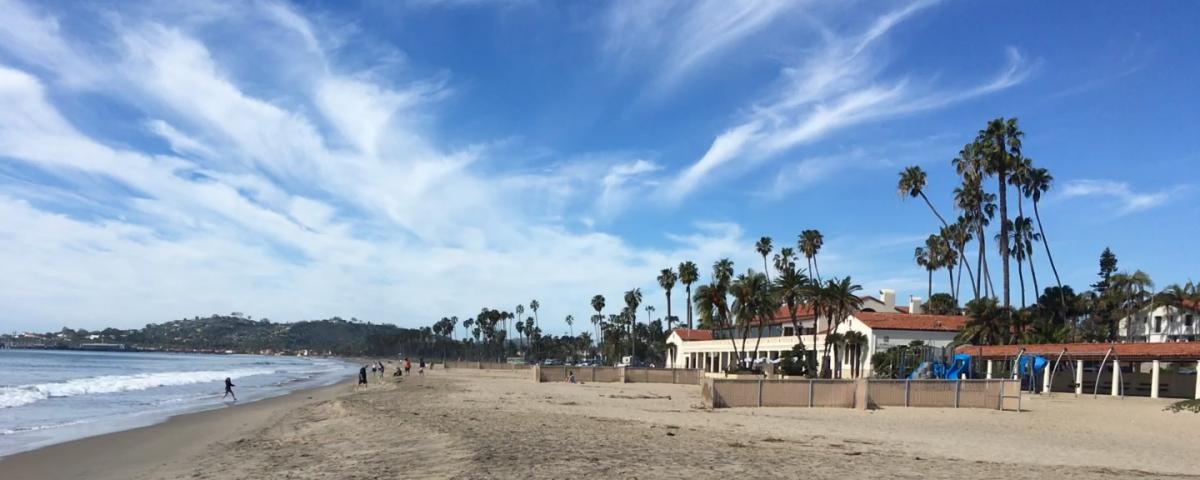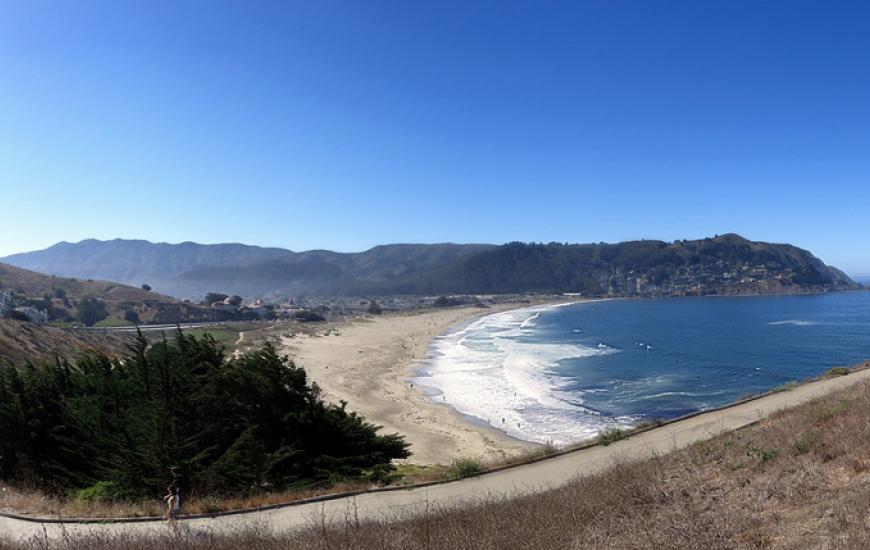What can cities and counties do to protect beach health? There are a number of practices that can balance competing interests and maximize benefits to beach ecosystems and beach-dependent industries alike.
Employ managed retreat
Managed retreat refers to the planned removal or movement of structures in order to allow the ocean to inundate or erode the land behind. Often viewed as an alternative to armoring, managed retreat can allow coastal habitats to migrate inland as the sea level rises if space is available. Because of this benefit, managed retreat is considered an ecologically superior practice.

Remove and/or avoid seawalls
Seawalls usually exacerbate erosion either onsite or downshore. The California Coastal Act stipulates that seawalls can only be used to protect existing structures or coastal-dependent land uses. Beyond this requirement, avoiding and/or removing seawalls wherever possible is an important method to conserve sandy beaches. Local governments may place “no future armoring” conditions on coastal development permits to incentivize developers to design their structures so armoring is not necessary during the project's lifetime.
Avoid structures that prevent sediment transport, such as revetments and dams. In many places, dams and other structures are preventing a natural supply of sediment from replenishing beaches. Removing dams may help replace some of the sand lost from beaches due to erosion. Learn more about how the removal of Matilija Dam is part of a plan to combat erosion at Surfers’ Point in Ventura County, CA.
Minimize the impacts of beach nourishment projects:
- Use sand with a similar composition to the natural sand.
- Add sand nearshore, and allow waves to deposit it on the beach.
- Plough the sand immediately after nourishment to prevent it from becoming so compact that it is inhospitable to beach critters.
- Carry out the nourishment at a time of the year when grunion and other nesting organisms are less prevalent.
- Perform several small nourishment projects rather than a single large project.
- Allow enough time between nourishment projects for the slowest reproducing beach organism to recolonize and reproduce.
For more information on these recommendations, see Speybroeck et al. 2006 in the References.
Create beach buffer zones
Sea level rise will push beaches inland. An important conservation strategy is to create or maintain open space behind beaches where they can migrate as the sea level rises over time. This open space can be created by requiring setbacks of new development, purchasing conservation easements, or acquiring and removing existing development.

Restore
Establish restoration programs to restore beaches and dunes to their natural state. Such projects will help reverse habitat loss, a critical impact of climate change on sandy beaches.
Reduce stressors to sandy beaches, such as pollution, in order to improve the ecosystem’s resiliency to climate change.
Increase habitat connectivity by reducing barriers between stretches of beach. Some beach critters only exist in a few isolated beaches in Southern California. Connecting isolated beaches may allow those critters to expand their range and, in doing so, improve their chance of survival.
Protect ecologically critical areas, such as dunes, the wrack line, coastal strand vegetation, and nesting and pupping areas. Require dogs to be leashed in sensitive areas.
Support research and monitoring
The impacts of climate change will not be uniform along the California coast, so research that investigates climate impacts at the local level is important.
A Success Story: Beach Management at Pacifica State Beach
Pacifica State Beach and San Pedro Creek had long experienced periodic flooding and erosion. Initially, the City of Pacifica used armoring and channelization to control these impacts. Later, it became clear that these techniques did not solve the problems and, in fact, might have exacerbated them. The city continued to face the challenges of beach erosion, flooding of homes and businesses, and loss of important steelhead trout habitat. In 1982, a severe flood damaged over 300 homes in the area. In response, the city partnered with Philip Williams and Associates, the California Coastal Conservancy, and the Pacifica Land Trust to develop a managed retreat strategy called the Pacifica State Beach Master Plan. This plan included the removal of two homes that were vulnerable to floods, dune restoration, and the restoration and expansion of wetlands at the creek mouth. The city plans to move one remaining business, a Taco Bell restaurant, inland. As a result of these efforts, this project was recognized as a Top Restored Beach by the American Shore and Beach Preservation Association in 2005.



